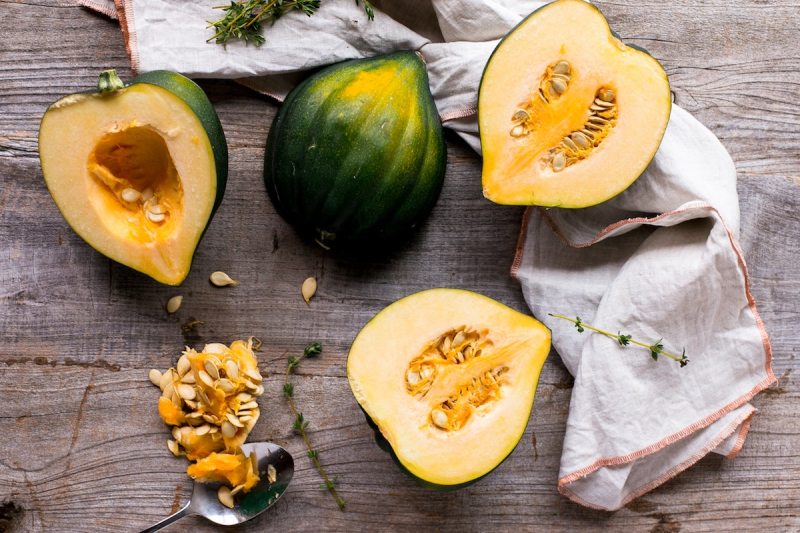The chestnut hardly gets any culinary credit. It plays a minor role in Christmas songs and is roasted around the holidays, but that’s about it. Well, it’s time to rethink it.
Right now, street vendors all over Italy are selling warm roasted chestnuts as we speak. Peak season is just behind us, but they’re still easy to get your hands on as they can store for long periods after they’re harvested each fall. They may not have a following quite like macadamia nuts or hazelnuts, but maybe they should.

Definitely roast them. They’re sumptuous prepared this way and even accompany darker beers like stout and holiday ales nicely. But this story is about using chestnuts in other ways. So, if it’s a flavor you like, get out your apron and try out the following recipes. They’ll have not just roasting chestnuts, but cooking with them too.
Italian Sausage and Chestnut Pasta
We love how chestnuts greet sausage in this BBC recipe. If you can’t find Lincolnshire sausage, other mild versions work too.
Prep Time: 10 minutes
Total Time: 30 minutes
Yield: 4 servings
Ingredients
- 1 tablespoon olive oil
- 1 large onion, finely chopped
- 1 pack (15-ounce) Lincolnshire sausage, meat squeezed out
- 200 grams vacuum-packed chestnut from a can or jar, very roughly chopped
- 2 garlic cloves, finely chopped
- 1 teaspoon chopped rosemary
- 1 teaspoon fennel seed
- 1 glass full-bodied red wine (try Tannat, Merlot, or Cabernet Sauvignon)
- 500 grams passata
- 500 grams large pasta shells or pappardelle
- Small pack curly parsley, finely chopped
- Parmesan or Grana Padano, to serve
Method
- Heat the oil in a large frying pan, and fry the onion for 5 mins. Once starting to soften, add the sausage and chestnuts, and fry for another 10-12 mins, breaking the meat up with a wooden spatula or spoon as you fry it. Keep the heat quite high and stir often.
- When the meat and chestnuts are golden brown, add the garlic, rosemary and fennel seeds, and cook for 2 mins more. Splash in the wine, let most of it boil away, then tip in the passata. Cover and simmer the sauce for 10 mins while you boil the pasta in plenty of salted water, following pack instructions.
- Reserve a cup of the pasta cooking water, then drain the pasta well. Toss the pasta, 3 tablespoons of the water, the ragu and most of the parsley together, then season to taste. Share between bowls, add a grinding of black pepper, the remaining parsley, then a handful of Parmesan shavings.
Baked Acorn Squash with Chestnuts, Apples, and Leeks

Here’s a wintry recipe that’s as satisfying as it is earthy, courtesy of Food and Wine.
Prep Time: 25 minutes
Total Time: 70 minutes
Yield: 8 servings
Ingredients
- 4 acorn squash (about 1 pound each), halved lengthwise and seeded
- 3 tablespoons extra-virgin olive oil, plus more for brushing
- Kosher salt and freshly ground pepper
- 3 tablespoons unsalted butter
- 1 1/2 cups diced celery
- 2 leeks, halved lengthwise and sliced crosswise 1/4 inch thick
- 2 Granny Smith apples, peeled and diced
- 2 teaspoons finely chopped thyme
- 10 ounces day-old rustic rye bread—crusts removed, bread cut into 1/2-inch dice (about 6 cups)
- 7 ounces vacuum-packed cooked chestnuts
- 1/2 cup chopped parsley
- 1/3 cup heavy cream
- 1/3 cup vegetable stock or low-sodium broth
Method
- Preheat the oven to 350°F. Brush the cut sides of the squash with olive oil and season the cavities with salt and pepper. Place the squash cut side down on two baking sheets and roast for about 25 minutes, until just tender.
- Meanwhile, in a large skillet, melt the butter in the 3 tablespoons of olive oil. Add the celery, leeks and a generous pinch each of salt and pepper and cook over moderate heat, stirring occasionally, until softened, about 8 minutes. Add the apples and thyme and cook over moderately high heat until the apples just start to soften, about 5 minutes. Scrape the mixture into a large bowl. Add the bread, chestnuts, parsley, cream and stock and toss well. Season with salt and pepper.
- Turn the squash cut side up. Spoon the stuffing into the cavities and bake until the squash are tender and the stuffing is golden brown, about 20 minutes. Transfer to plates and serve.
Chestnut Gravy
This flavorful recipe from Jamie Oliver is sure to be a hit at the holiday dinner table. But really, you should make it any time you’re working with poultry or have some mashed potatoes that need dousing.
Prep Time: 5 minutes
Total Time: 25 minutes
Yield: 12 servings
Ingredients
- Higher-welfare turkey giblets , and sticky bits from your cooked turkey
- 3 1/2 ounces port, optional
- 200 grams vac-packed or tinned chestnuts
- 2 tablespoons onion marmalade, optional
- 1 liter organic chicken stock
Method
- Skim away about three-quarters of the fat from the surface of your turkey tray until you’re left with the good sticky bits. Place the tray on the hob over a high heat and bring to the boil.
- Add the port, if using, let it cook away for a few minutes, then crumble in the chestnuts. Scrape up all the sticky bits from the base and sides of the tray, then add the stock and marmalade, if using, and give everything a good mash. Pour in 16 ounces of boiling water, bring back to the boil, then reduce the heat to low and simmer gently for 20 minutes or until thickened and reduced to your desired consistency, stirring occasionally.
- Pour the gravy through a coarse sieve into a pan, pushing all the goodness through with the back of a spoon. Add any resting juices from the turkey and keep warm over a low heat until you’re ready to serve.


